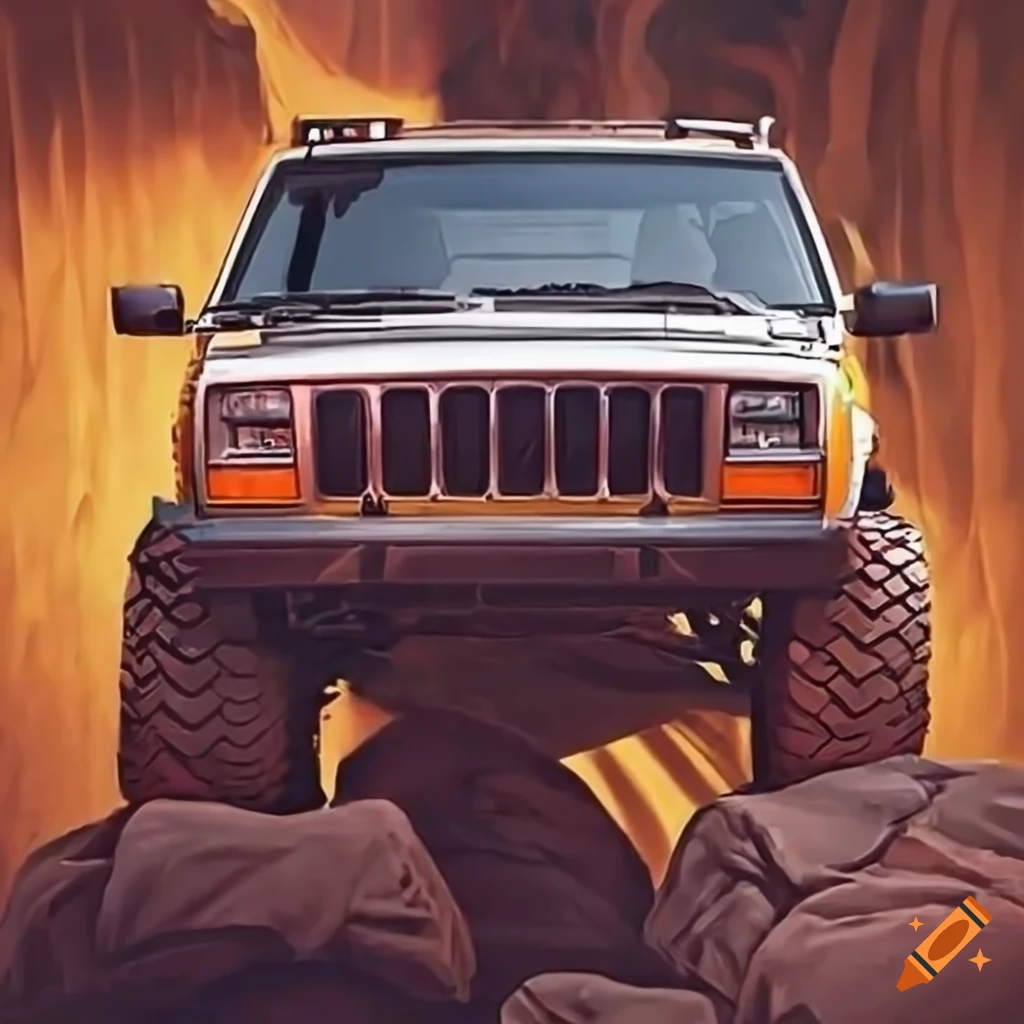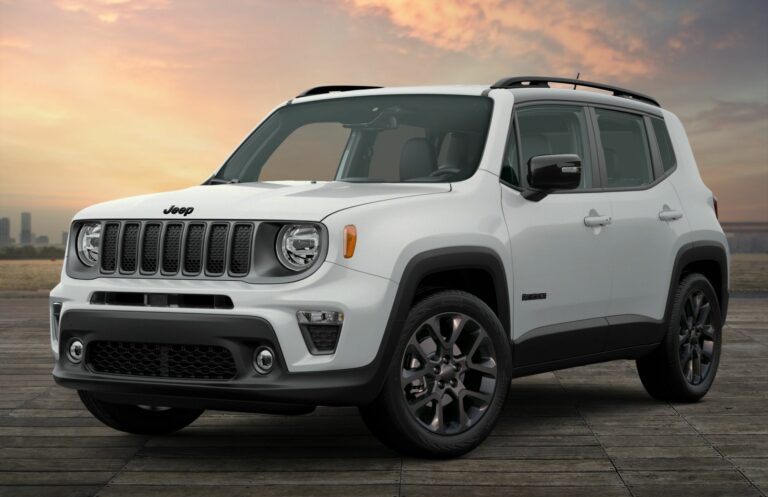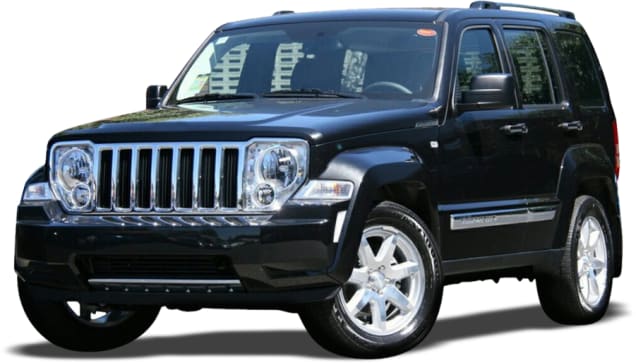Jeep Cherokee XJ: The Enduring Icon of Off-Road Simplicity
Jeep Cherokee XJ: The Enduring Icon of Off-Road Simplicity jeeps.truckstrend.com
Few vehicles achieve true icon status, fewer still manage to do so with such a straightforward, utilitarian design. The Jeep Cherokee XJ, produced from 1984 to 2001, is one such rarity. More than just an SUV, the XJ represents a philosophy of rugged capability, simple mechanics, and an unparalleled connection with its owners. It’s the vehicle that pioneered the modern compact SUV, proving that a family-friendly wagon could also be a formidable off-road machine. From suburban streets to the most challenging trails, the XJ has earned its reputation as a reliable workhorse, a versatile adventurer, and a beloved classic that continues to capture the hearts of enthusiasts worldwide.
The Genesis of an Icon: A Brief History
Jeep Cherokee XJ: The Enduring Icon of Off-Road Simplicity
The Jeep Cherokee XJ emerged from a pivotal moment in automotive history. Introduced by AMC (American Motors Corporation) in 1983 as a 1984 model, it was designed to replace the larger, full-size SJ Cherokee. Engineers at Jeep were tasked with creating a lighter, more fuel-efficient vehicle that retained the brand’s legendary off-road prowess. The solution was revolutionary: a unibody (monocoque) construction, a first for a true American SUV. This innovative approach allowed for a lighter, more rigid structure, contributing to better handling and fuel economy without sacrificing durability.
The XJ quickly became a sales success, offering a blend of practical daily usability and genuine off-road capability that few competitors could match. Over its nearly two-decade production run, it saw several facelifts and mechanical updates, but its core identity remained intact. Even after its discontinuation in North America in 2001 (replaced by the Liberty/KJ), the XJ continued to be produced in China until 2005, a testament to its enduring design and utility. Its legacy is immense, influencing countless SUVs that followed and solidifying Jeep’s position as the king of off-road vehicles.
Design and Engineering: Form Meets Function
The XJ’s design is a masterclass in functional aesthetics. Its boxy, upright stance isn’t just for looks; it maximizes interior space and offers excellent visibility. The unibody construction, while initially met with skepticism by some traditionalists, proved to be remarkably strong and lightweight. This rigid platform contributed to the XJ’s surprisingly agile handling on pavement and its robustness off-road.
Key Design Elements:
- Unibody Construction: Unlike traditional body-on-frame SUVs, the XJ’s chassis and body are a single, integrated unit. This reduces weight and increases rigidity, leading to better ride quality and handling.
- Compact Footprint: Despite its interior volume, the XJ is relatively compact, making it maneuverable in urban environments and tight off-road trails.
- Solid Axles: Both front (Dana 30) and rear (Dana 35 or Chrysler 8.25) solid axles provide exceptional articulation and durability for off-road use, allowing wheels to maintain contact with uneven terrain.
- Coil Front, Leaf Rear Suspension: This setup offers a good balance of on-road comfort and off-road capability, with ample room for aftermarket modifications.

The interior, while spartan by modern standards, is ergonomically sound and surprisingly spacious for a vehicle of its size. The large windows and relatively thin pillars provide an airy feel and excellent outward visibility, crucial for both daily driving and navigating obstacles.
Powerplants and Drivetrains: Heart of the Beast

The heart of the Jeep Cherokee XJ’s legendary reliability and capability lies in its powertrain options, particularly one engine that stands head and shoulders above the rest:
- 4.0L AMC Straight-Six (I6): This inline-six engine is arguably the most celebrated aspect of the XJ. Known for its torquey power delivery, bulletproof reliability, and longevity, the 4.0L (initially Renix-controlled, later Chrysler MPI) is capable of enduring hundreds of thousands of miles with proper maintenance. Its low-end torque is perfect for off-roading, allowing the XJ to crawl over obstacles with ease.
- 2.5L AMC Inline-Four (I4): Available in earlier models, this engine provided adequate power but lacked the robust character of the 4.0L.
- 2.8L GM V6 (Early Models): A short-lived option, quickly replaced by the 4.0L.
- Diesel Engines (Export Markets): Various diesel engines from manufacturers like Renault and VM Motori were offered in non-North American markets, known for their fuel efficiency and torque.

Transmission Options:
- AW4 Automatic: The Aisin-Warner AW4 is a four-speed automatic transmission known for its durability and smooth shifts. It’s a favorite among off-roaders due to its reliability.
- AX15 Manual: The Aisin AX15 is a five-speed manual transmission, also highly regarded for its strength and direct feel.
- Other manuals like the BA-10/5 (early, less desirable) were also used.
Transfer Cases:
- NP231 Command-Trac: A part-time 2WD/4WD transfer case, ideal for serious off-roading as it lacks a full-time option, preventing binding on pavement.
- NP242 Selec-Trac: A more versatile full-time/part-time 2WD/4WD transfer case, allowing the XJ to be driven in 4WD on paved roads, making it excellent for varied weather conditions.
This combination of robust engines, durable transmissions, and versatile transfer cases is a core reason for the XJ’s enduring appeal.
Unrivaled Capability: Why the XJ Excels Off-Road
The Jeep Cherokee XJ isn’t just an SUV that can go off-road; it’s an SUV that was designed to excel there. Its capabilities stem from a combination of inherent design advantages and the aftermarket support that has blossomed around it.
- Excellent Proportions: With short front and rear overhangs, the XJ boasts impressive approach and departure angles, allowing it to climb steep obstacles and descend without scraping.
- Solid Axles: The live axles provide maximum articulation, keeping tires in contact with the ground over uneven terrain, ensuring consistent traction.
- Lightweight and Nimble: Compared to larger, heavier SUVs, the XJ’s lighter weight makes it less prone to getting stuck and easier to recover. Its compact size allows it to navigate tight trails.
- Aftermarket Support: The XJ benefits from one of the most extensive aftermarket communities in the automotive world. From lift kits and heavy-duty bumpers to drivetrain upgrades and armor, virtually any modification imaginable is available to enhance its off-road prowess. This allows owners to tailor their XJ to their specific needs, from mild trail use to extreme rock crawling.
- Simplicity: Fewer complex electronic systems mean less to break when subjected to harsh off-road conditions, and easier field repairs.
Common Issues and What to Look For
While the XJ is renowned for its reliability, like any vehicle of its age, it has its quirks and common issues. Knowing what to look for can save potential buyers significant headaches.
- Cooling System: The 4.0L runs hot, and a neglected cooling system is a common failure point. Check for cracked radiator necks, clogged radiators, failed water pumps, and leaky hoses. An updated closed cooling system (later models) is more reliable than the earlier open system.
- Rust: Being a unibody vehicle, rust on the frame rails (unibody rails), floor pans, rocker panels, and rear quarter panels is a significant concern, especially in areas that use road salt. Inspect thoroughly.
- "Lifter Tick": A common, often harmless, ticking noise from the engine. While it can indicate worn lifters or a cam, it’s frequently just a characteristic of the 4.0L and doesn’t always signify imminent failure.
- Oil Leaks: Rear main seal and oil filter adapter leaks are very common on the 4.0L. While messy, they are usually not catastrophic but should be addressed.
- Electrical Gremlins: Faulty grounds, especially around the headlights and dashboard, can cause flickering lights or intermittent gauge issues.
- Suspension Components: Bushings, tie rods, and ball joints wear out over time, leading to loose steering or clunking noises.
- Exhaust Manifold Cracks: The exhaust manifold on the 4.0L is prone to cracking due to heat cycles, leading to exhaust leaks and a ticking sound.
The Modder’s Dream: Customization and Upgrades
The XJ is a blank canvas for customization. Its robust platform and extensive aftermarket support make it incredibly easy and rewarding to modify.
- Lift Kits: Ranging from mild 1.5-inch spacers to extreme 6.5+ inch long-arm systems, lift kits are the most common modification, allowing for larger tires and improved ground clearance.
- Tires: Upgrading to aggressive all-terrain or mud-terrain tires significantly enhances off-road traction.
- Bumpers and Armor: Aftermarket steel bumpers provide better protection and recovery points, while rock sliders and skid plates protect the undercarriage.
- Drivetrain Upgrades: Swapping to stronger axles (e.g., Ford 8.8 or Dana 44), installing lockers, or regearing for larger tires are popular for serious off-roaders.
- Engine Performance: While the 4.0L is stout, upgrades like intake, exhaust, and header improvements can yield minor power gains.
Buying an XJ Today: A Buyer’s Guide
Purchasing an XJ today requires a careful eye and realistic expectations. These are old vehicles, and condition varies wildly.
- Inspect for Rust: This is paramount. Pay close attention to the unibody rails, floorboards, rocker panels, and around the rear leaf spring mounts.
- Engine Health: Listen for excessive knocking, smoke from the exhaust (especially blue or white), and check oil for sludge. A "lifter tick" is common but should be noted.
- Cooling System Check: Look for signs of overheating (discolored coolant, steam), and inspect hoses and radiator for leaks.
- Drivetrain: Test 4WD engages smoothly. Listen for clunks or grinding from the transmission, transfer case, or axles. Check for fluid leaks.
- Suspension and Steering: Look for worn bushings, loose steering (excessive play), and uneven tire wear.
- Electrical: Test all lights, gauges, windows, and HVAC.
- Maintenance Records: A well-documented maintenance history is a huge plus, indicating a caring owner.
- Purpose: Determine if you want a daily driver, a weekend trail rig, or a dedicated rock crawler, as this will influence what you look for.
Maintenance and Longevity: Keeping Your XJ Alive
The XJ is famously easy to work on, making DIY maintenance a viable option for many owners. Regular, proactive maintenance is key to its longevity.
- Fluid Changes: Regular oil changes (every 3,000-5,000 miles), transmission fluid, transfer case fluid, and differential fluid changes are crucial.
- Cooling System Flush: Periodically flush the cooling system and inspect components. Consider upgrading to an all-aluminum radiator for better cooling.
- Grease Zerk Fittings: Regularly grease all fittings on the steering and suspension components.
- Inspect for Leaks: Proactively address any oil, coolant, or drivetrain fluid leaks before they become major issues.
- Rust Prevention: If you live in a rust-prone area, consider undercoating or regularly cleaning the underside of the vehicle.
The XJ Community: A Global Phenomenon
The Jeep Cherokee XJ isn’t just a vehicle; it’s a culture. A vibrant and passionate community has grown around it, sharing knowledge, parts, and trail experiences. Online forums, social media groups, and local clubs are dedicated solely to the XJ, providing invaluable resources for owners and enthusiasts. This strong community support ensures that parts remain available, expertise is shared freely, and the XJ’s legacy continues to thrive.
Practical Advice and Actionable Insights
For anyone considering an XJ, or already owning one, here are some actionable insights:
- Prioritize Rust-Free: Above all else, seek out the least rusty example you can find. Mechanical issues are fixable; severe rust is often a death sentence.
- Budget for Maintenance: Even a "good" XJ will need attention. Factor in a budget for immediate maintenance items (fluids, tune-up, common leak fixes) after purchase.
- Learn to DIY: The XJ is a fantastic platform for learning basic automotive mechanics. Invest in a service manual and some tools.
- Join the Community: Leverage the vast knowledge base of XJ forums and groups. You’ll find answers to almost any question and connect with like-minded enthusiasts.
- Understand Your Needs: A stock XJ is incredibly capable for most light to moderate off-roading. Don’t feel pressured to lift it 6 inches if you only plan on fire roads.
Pricing Guide: Jeep Cherokee XJ
Determining a precise price for a used Jeep Cherokee XJ is challenging due to its age, condition variability, mileage, modifications, and regional market differences. The table below offers a general guide based on condition for models with the desirable 4.0L engine. Prices are for unmodified or mildly modified examples. Highly modified or perfectly restored examples can command significantly higher prices.
| Condition Category | Estimated Price Range (USD) | Key Characteristics |
|---|



